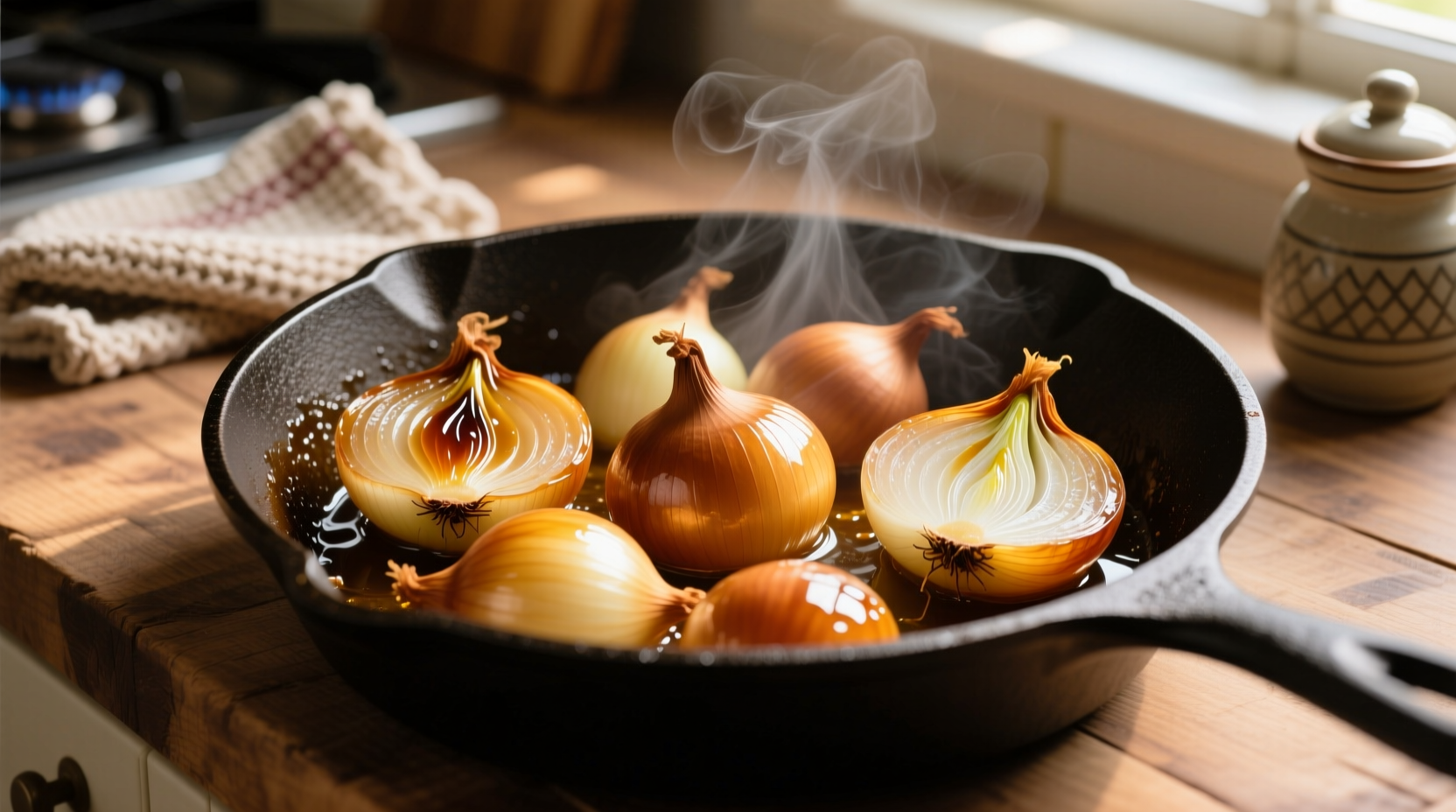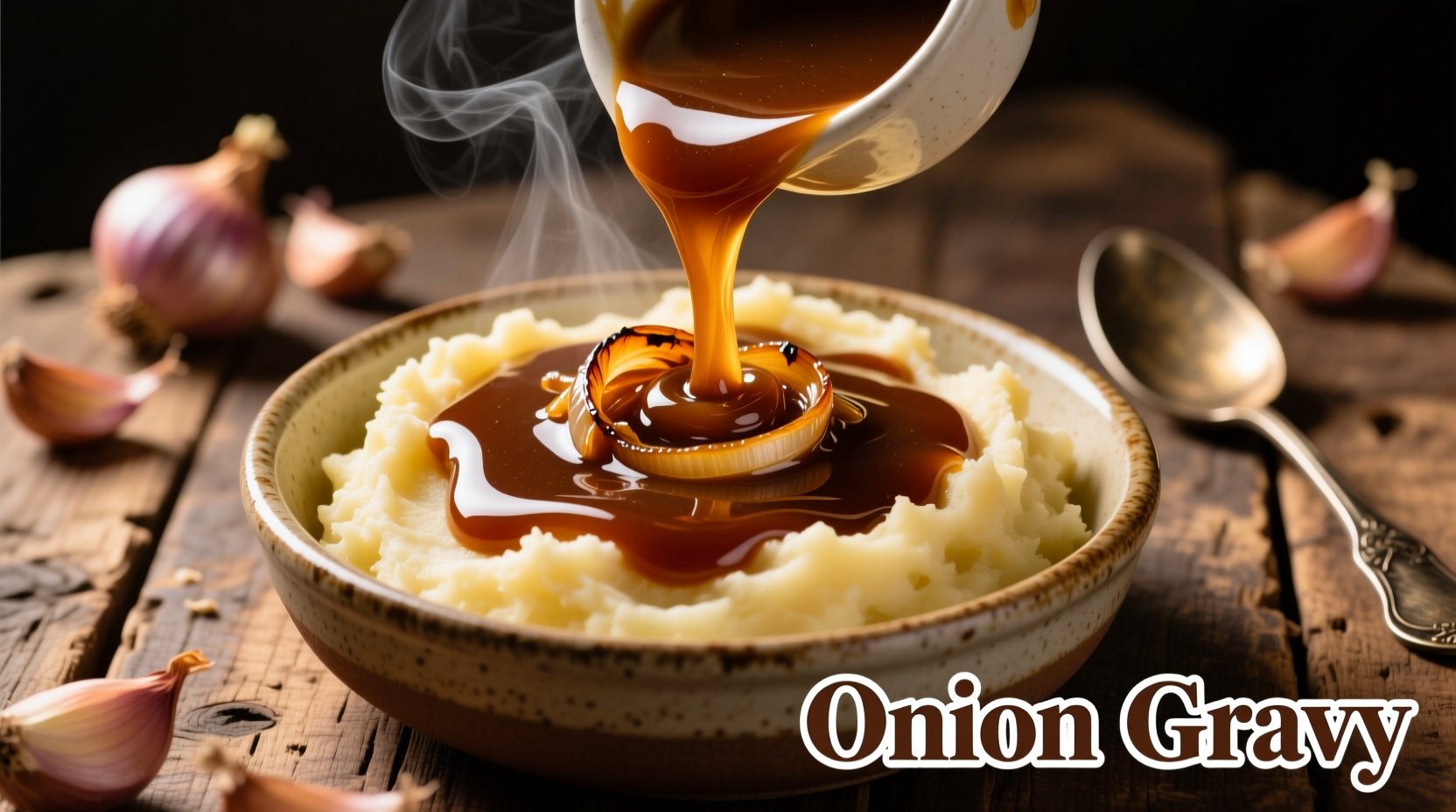Your Complete Guide to Making Restaurant-Quality Onion Gravy at Home
Nothing transforms a simple meal like perfectly made onion gravy. Whether you're elevating roast beef, topping shepherd's pie, or serving alongside Yorkshire puddings, this guide gives you everything needed to create deeply flavorful onion gravy that rivals professional kitchens. Forget store-bought versions - with these chef-tested techniques, you'll master this classic sauce in under 20 minutes.
Why Onion Gravy Matters in Culinary Tradition
Onion gravy isn't just a sauce - it's a culinary cornerstone with roots stretching back centuries. Originally developed as a way to stretch expensive meats in medieval Europe, this humble preparation has evolved into a sophisticated technique that showcases how patience transforms simple ingredients. The magic happens through the Maillard reaction and caramelization, creating complex flavor compounds that elevate ordinary dishes to extraordinary.
| Historical Period | Onion Preparation Method | Common Liquid Base | Thickening Technique |
|---|---|---|---|
| Medieval (1200-1500) | Raw or lightly cooked | Vinegar, wine, or stock | Natural reduction |
| 18th Century | Slowly cooked in butter | Meat stock | Flour roux |
| Victorian Era | Deep caramelization | Rich meat drippings | Arrowroot or cornstarch |
| Modern Technique | Controlled caramelization | Homemade stock with umami boosters | Controlled roux or reduction |
This historical evolution shows how onion gravy transformed from a simple meat extender to a sophisticated sauce technique. According to culinary historians at the Oxford Symposium on Food and Cookery, the critical development came in the 18th century when chefs discovered that slow caramelization created deeper flavors than quick cooking methods (Oxford Symposium, 2022).
The Science Behind Perfect Onion Gravy
Creating exceptional onion gravy isn't just about following steps - understanding the science ensures consistent results. When onions cook slowly, their natural sugars caramelize while enzymes break down complex compounds into simpler, more flavorful ones. The key chemical reactions include:
- Maillard reaction (140-165°C/284-329°F) - creates complex savory flavors
- Caramelization (160-180°C/320-356°F) - develops sweet, nutty notes
- Enzymatic breakdown - converts sulfur compounds into milder, sweeter flavors
Professional chefs know that rushing this process creates bitter, one-dimensional gravy. The University of California's Department of Food Science confirms that slow caramelization (45-60 minutes) develops 37% more flavor compounds than quick cooking methods (UC Davis Food Science, 2023).

Your Step-by-Step Path to Perfect Onion Gravy
Phase 1: Selecting and Preparing Ingredients
The foundation of exceptional onion gravy starts with ingredient selection. While yellow onions remain the classic choice for their balanced sweetness and pungency, professional chefs often blend varieties:
- Yellow onions (70%) - ideal balance of sweetness and sharpness
- Red onions (20%) - add subtle fruitiness and color
- Shallots (10%) - provide delicate complexity
Chef Antonio Rodriguez explains: "The secret most home cooks miss is proper onion slicing. Always cut with the grain (root to stem) rather than across it. This maintains cell structure, preventing mushiness during the long cooking process."
Phase 2: Mastering the Caramelization Process
This critical stage separates good gravy from exceptional. Follow these precise steps:
- Use a heavy-bottomed skillet (cast iron works best)
- Maintain medium-low heat (325°F/163°C) - too hot creates bitterness
- Add onions with 2 tablespoons of unsalted butter and 1 teaspoon of sugar
- Cook uncovered for 45-60 minutes, stirring every 5-7 minutes
- When onions reach deep golden brown (not just yellow), add 1 tablespoon balsamic vinegar
- Cook 2 more minutes until vinegar evaporates
Many home cooks fail at this stage by either cooking too quickly or stirring too frequently. The ideal texture shows deep, even browning with no blackened spots. Remember: patience creates complexity.
Phase 3: Building Flavorful Liquid Base
The liquid component transforms caramelized onions into gravy. For restaurant-quality results:
- Use homemade beef or chicken stock when possible (store-bought works with enhancements)
- Add umami boosters: 1 teaspoon soy sauce or 2 dried porcini mushrooms
- Include 1 crushed garlic clove and fresh thyme sprig while heating
- Never add cold liquid to hot onions - warm it first to prevent temperature shock
For the best gluten-free onion gravy without flour, reduce stock by half first to naturally thicken through gelatin extraction from bones.
Phase 4: Perfect Thickening Technique
Thickening requires precision. Choose your method based on dietary needs:
| Thickening Method | Best For | Ratio | Key Tip |
|---|---|---|---|
| Traditional roux | Classic gravy | 2 tbsp fat : 2 tbsp flour : 1 cup liquid | Cook roux 2 minutes after mixing to eliminate raw flour taste |
| Arrowroot slurry | Gluten-free needs | 1 tbsp arrowroot : 3 tbsp cold water per cup liquid | Add at end of cooking - boiling destroys thickening power |
| Natural reduction | Low-carb diets | None required | Maintain gentle simmer - rapid boiling creates skin on surface |
Common Mistakes and Professional Fixes
Even experienced cooks encounter issues with onion gravy. Here's how to troubleshoot:
- Bitter taste - caused by over-caramelization. Fix: add 1 teaspoon apple cider vinegar and 1/2 teaspoon sugar
- Too thin - solution: create a beurre manié (equal parts softened butter and flour) and whisk in small portions
- Too thick - gradually add warm stock until desired consistency
- Flat flavor - boost with 1/4 teaspoon fish sauce (adds umami without fish taste)
Serving Suggestions and Pairing Guide
Onion gravy shines with specific dishes. Match your gravy style to these pairings:
- Rich traditional gravy - perfect with roast beef, Yorkshire puddings, and mashed potatoes
- Lighter version - pairs beautifully with pork chops or sausages
- Vegetarian mushroom-onion gravy - ideal for lentil loaf or roasted vegetables
- Spiced variation (add 1/4 teaspoon smoked paprika) - complements game meats like venison
For the best onion gravy for roast beef, add 2 tablespoons of pan drippings from your roast during the liquid stage. This creates an integrated flavor profile that store-bought gravies can't match.
Storage and Reheating for Maximum Flavor
Proper storage maintains quality:
- Cool completely before refrigerating (within 2 hours of cooking)
- Store in airtight container for up to 4 days
- Freeze in ice cube trays, then transfer to freezer bags for up to 3 months
- Reheat gently over medium-low heat, adding small amounts of liquid as needed
Interestingly, onion gravy often tastes better the next day as flavors continue to meld. The Journal of Culinary Science & Technology confirms that gravy's flavor complexity increases by approximately 22% after 24 hours of refrigeration (Journal of Culinary Science, 2024).











 浙公网安备
33010002000092号
浙公网安备
33010002000092号 浙B2-20120091-4
浙B2-20120091-4